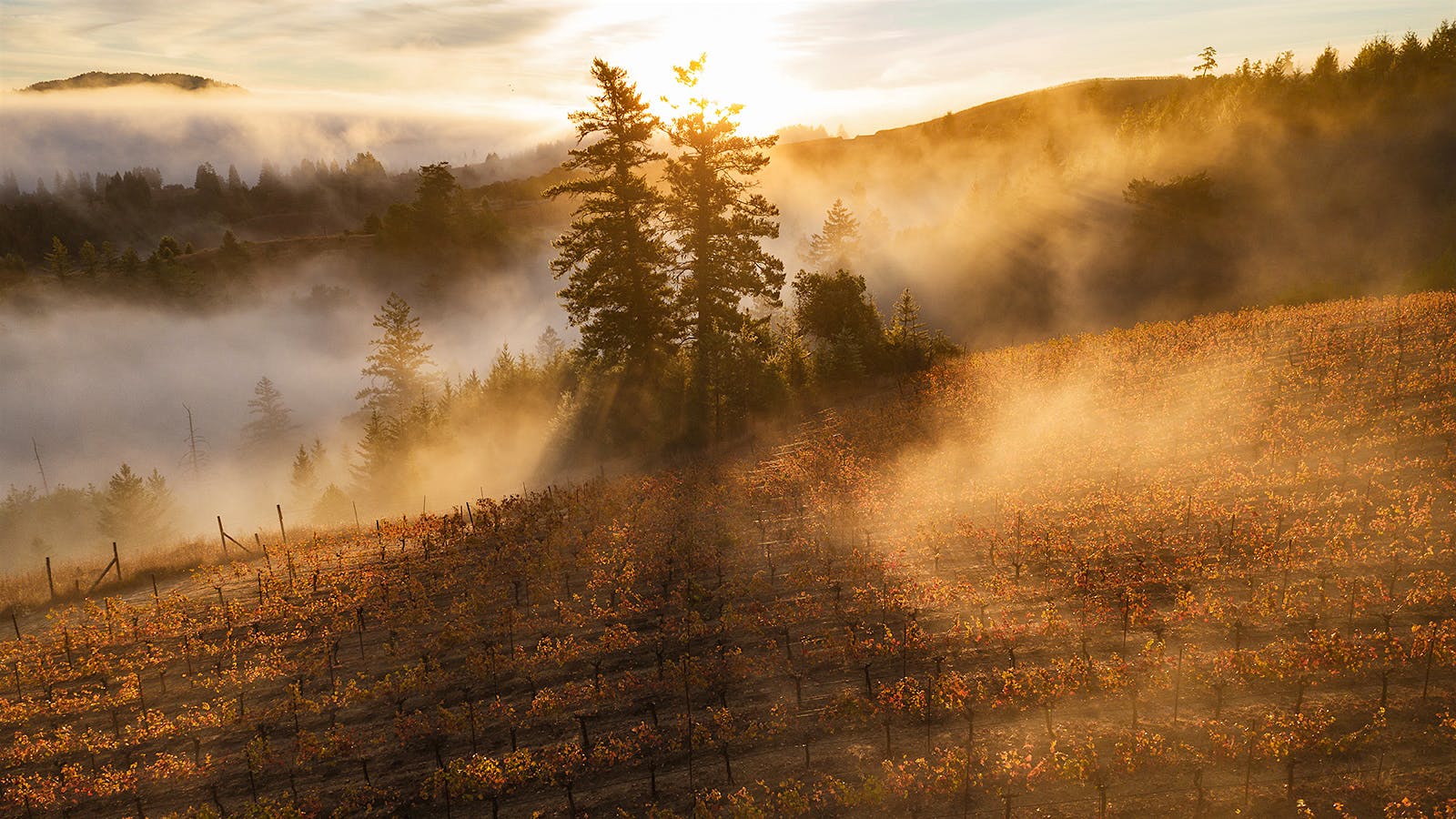Defining California’s Sonoma Coast American Viticulture Area (AVA)—and the wines it produces—has long been challenging. The vast region spans 750 miles, with vineyards near the Mendocino County border in the north to the Carneros border in the south, some 20 miles inland from the Pacific coast. But as of now, wines made from the westernmost reaches of the Sonoma Coast, closest to the water, can be labeled under the West Sonoma Coast AVA. Officials with the Alcohol and Tobacco Tax and Trade Bureau (TTB) announced the approval of the West Sonoma Coast AVA, making it the third sub-AVA within the greater Sonoma Coast, as well as Sonoma County’s 19th appellation.
“It’s long overdue,” Hirsch winemaker and general manager Jasmine Hirsch told Wine Spectator. “People have been talking about true Sonoma Coast for over a decade; there’s already recognition. The TTB approval is just an acknowledgment of what we’ve been talking about.”
The West Sonoma Coast AVA spans 141,000 acres and encompasses approximately 1,000 acres of vines in 50 vineyards, predominantly Pinot Noir and Chardonnay, planted on mountainous topography ranging from 400 to 1,800 feet in elevation, in close proximity to the Pacific. The AVA can be broken into three sub-regions from north to south, including remote Annapolis, the Fort Ross-Seaview AVA and the area arounds the towns of Freestone and Occidental. The Russian River Valley and Petaluma Gap AVAs provide borders to the east and south, and the Mendocino County line abuts the north.
When sub-appellations such as the West Sonoma Coast are proposed, evidence must be provided to show meaningful differences from the surrounding area. The broader Sonoma Coast AVA was largely ambiguous before the Fort Ross-Seaview AVA (2012), Petaluma Gap (2018) and now West Sonoma Coast were added. Covering more than 500,000 acres (almost half of the total land area of Sonoma County), the Sonoma Coast AVA, for many, was too broad to help wineries explain their terroirs to consumers.
For the last decade, the West Sonoma Coast Vintners Association (WSCV), a group that includes 28 wineries and vineyards, has been trying to define and convey the unique aspects of the region to media, trade and wine lovers. For years, Ted Lemon, WSCV president and founder winemaker for Littorai, and others have referenced their wines as being from the “True” Sonoma Coast.
“From proximity to ocean to rainfall totals to soils, even from an ecological perspective, we’re talking [about] moving from land of the redwood to land of the oaks. These factors truly define [West Sonoma Coast],” said Lemon.
Wines from the West Sonoma Coast are unmistakably defined by coastal influence. “Our proximity to the ocean and San Andreas fault line is what we all share,” said Hirsch. “It takes me an hour and a half to drive to Ted [Lemon], but I consider him a neighbor. From a physical terroir point of view, we’re all dealing with the same climatic and logistical challenges.”
Daytime temperatures in the West Sonoma Coast are typically 10 degrees cooler than in other parts of the Sonoma Coast. Some vineyards sit above the fog line, while others lie below. Though daytime highs are cooler, nighttime lows are warmer, providing a modest diurnal swing. That allows the grapes to ripen slowly during the day and the night, which can only be achieved in a genuinely cold-climate maritime environment.
Those extreme conditions have an impact on farming. “I write all my 10-year plans based on getting one and a half tons per acre,” said Lemon. In other regions, yields are much higher. “If we get more, we jump for joy!” Farming in the West Sonoma area means grappling with a different blooming cycle from other regions and growing in minimal alluvial soils. “The nature of the weather and soils limits you to smaller yields, which affects color, tannin, and acidity,” added Lemon.
These influences translate to the finished product in a good way. “Growing here gives us a higher probability of making wines with, as I like to call, Old World structure with New World fruit,” said Hirsch. The gradual ripening helps grapes reach physiological maturity at lower sugar levels, with distinct natural acidity. “There is something we’re all seeking in our wines that is so compelling that we’re willing to face extreme challenges and risks of farming here, which speaks to the commitment we have in the region,” she added.
Lemon agrees but believes challenges loom. The association’s initial petition, drafted in 2015, included a boundary that overlapped parts of the Russian River Valley AVA. However, for sub-appellations, overlapping AVAs is not permitted, and that portion along the western fringes of the Russian River Valley had to be removed to obtain approval.
As a result, the borderline runs through the middle of Freestone valley. “It doesn’t make a lot of sense, but we all voted and agreed this is what we wanted to do,” he explained.
Sub-appellations of larger regions can sometimes struggle for recognition, but Hirsch likens the delineation to Burgundy. “Just as we might talk about Côte du Nuits, that doesn’t mean we can’t talk about the other villages,” she explained. “Hirsch Vineyards is in Fort Ross, but also West Sonoma Coast. We can get micro and zoom in on many levels, but we have more in common with vineyards near Freestone and Occidental than we do in Carneros or Russian River Valley.”
Both Lemon and Hirsch believe that it won’t take much time for the wines with the West Sonoma Coast label to catch on. “When we go out and show wines, it’s going to be immediately impactful, and members are excited to put it on labels and use as soon as they can,” said Hirsch. “This is a start for trade and consumers to understand better what a wine will taste like before cracking a bottle. There’s still a tremendous amount of diversity, but this is a more focused way than just Sonoma Coast.”
Stay on top of important wine stories with Wine Spectator’s free Breaking News Alerts.
